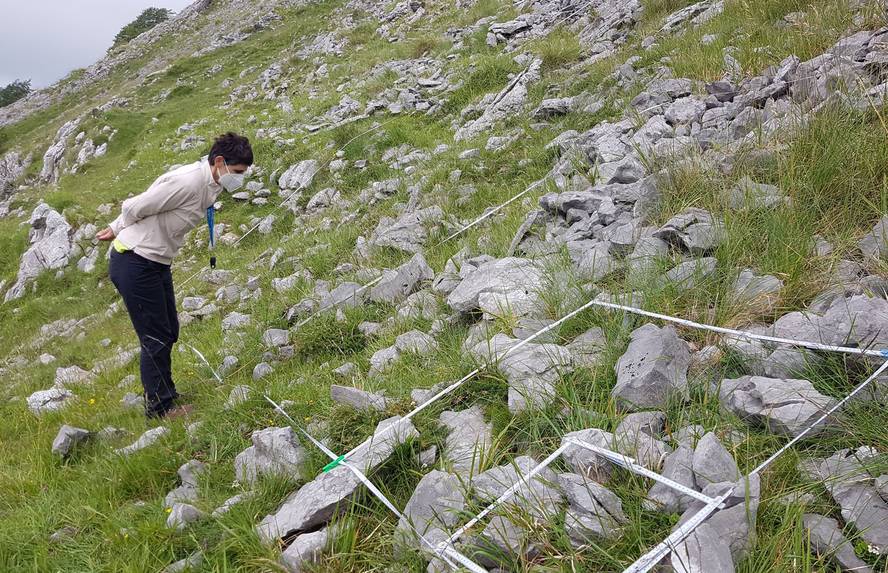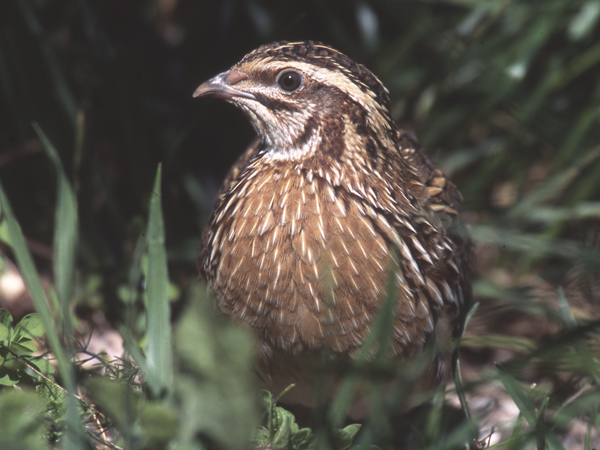Hidden in the forests of Euskal Herria, symbol in pharmacies
- The snake of Eskulapio likes spring. At this time he comes out in a black gala suit. Slim, long and light. And you would also see it, perhaps in your own village. In fact, the snake of Eskulapio has a little secret that few people know: he likes pharmacies.

The rays of the sun struggle to pass between their leaves. In the continuous dance of the shadows of the forest light, there's an animal that feels comfortable. It moves quietly. It is located in your area. Between the plants he goes in zigzag, until he finds the small oasis he was looking for: the warm island of light that the rays that warm his body have created in the land of the forest. It's screwed, it's standing. However, the eyes and the shark are very attentive.
Big and dark snake. Terrible in the eyes of some. Attractive and slender for others. If you see the snake of Eskulapio, at least, you will remember that you found it. On the one hand, because you don't see a snake every day, and on the other, because dark and large snakes leave their mark on our memory. Because we live in a culture in which snakes have been collected and scorned. In a society that has orally conveyed its hatred towards them. But it doesn't mix. In the world, they are places where snakes are sold. There are places that have put their knowledge and the benefit they bring to the human being at the forefront. Above all the erroneous beliefs, we should take care of the knowledge and thus give the snake the reputation it deserves.
The snake of Eskulapio will not have to give us any reason to frighten us. The opposite is true. It's a devouring of micromammals or small mammals. Excellent around the house if we want to control their pests in the orchard. He has no poison and if we leave him alone he tends to flee. It will not confront us, therefore.
It does not resist, but it is occasionally found with two legs based on false myths. Thus, unfortunately, each year the snakes of Eskulapio are found dead, beaten, crushed in the head, or in other cases, nailed in the pointed riostras of the fences, to highlight the intentionality of the murderer. And so this species, protected at European level, finds enemies everywhere. It is not surprising, therefore, that refuge is sought between the lights and shadows of the forest, in solitude and silence.
Beliefs and legends as a hiding place from reality
We only have to look in the Bible to realize the attempt to spread the bad reputation of snakes: In it we will find passages like “the most perverse beast the Lord God had made as a snake.” And you will soon remember that this legless animal was the cause of the sin of Adam and Eba.
In the Koran, the snake is also considered to be a malignant being, and the Hebrews regard all reptiles as non-pure beings. It has spread among legends of different cultures, created from the backbone of the most perverse men.
However, in the dance of lights and shadows we have to look for points of light to survive, and so, in the area where the sun awakens, in the east, we will also find different thoughts with the snakes. Snakes have been venerated in Chinese culture and in ancient Egypt they were given a special place, transmitting to the Greeks that closeness to snakes. Thus, snakes became indicators of divination, prudence, regeneration and medicine among the Hellenic, who without realizing have brought their mindset to our peoples. Without realizing it, the snake of Eskulapio has been introduced into many peoples of the Basque Country. It can't be physically, but it can be a symbol.
From forests to pharmacies
The snake of Eskulapio has been regarded as a guardian and symbol of health in Greek civilization, and later that cult spread to Roman civilization. The snake of Eskulapio owes its name to the famous Greek physician Asclepio, known by the Romans as “Esculapio”. The doctor Asclepio, after his death, was divine and there began his admiration. Since then, he was cited in various literary works of the Greco-Roman culture and 300 temples were built in his honor (the so-called ascensions), built as hospitals to care for very ill people.
According to legend, when Doctor Asclepio was healing the sick Glauco, a snake appeared next to him and Asclepio killed her with the cane. Then another snake appeared with herbs in the mouth that raised the serpent killed with these herbs. In view of this, Asclepio used these herbs to cure Glauco. Since then, Asclepio, the stick and the snake have been very related to the symbolism of health. The snake of Eskulapio is still linked to health today. This snake, the protagonist of so many legends and myths, is today a symbol of doctors and pharmacists. Accidentally, the snake has moved from the forest to pharmacies.
In the attempt to visualize snakes: #snakes
With the aim of freeing snakes from false beliefs and spreading their role and respect to them in society, the Herpetology Department of the Society of Sciences Aranzadi has launched the #sugebizi project this spring. So people encourage people to ship snakes that they find with the hashtag #sugebizi, the photo and the location on the Twitter social network. As the photographs are sent, the experts respond to the species and provide data to increase their knowledge. In addition, they disseminate small divulgative spaces in which the characteristics of snake species are explained and every two weeks on the map of the Basque Country all the quotes received so far.
The objective is to disseminate knowledge and respect to snakes and, using citizen science, to increase the knowledge we have about snakes in the Basque Country. All this is accompanied, of course, by messages of responsibility. From a certain distance the snake will gain peace of mind and we, without risk, will be able to enjoy this beautiful reptile.
From northern Europe to the Basque Country. Inside the coast
Thanks to the data obtained from different parts of the Basque Country, it has been confirmed that the snake of Eskulapio loved the forest, but also has other places of residence. The population has found it, for example, in the forest of Urumea, or between landscaped houses located on the hillside of Jaizkibel. It has already been seen in the freshly cut grass of the golf course, next to the river, even on the Biscayan coast, near the sea, on the back grass of the beach or on a mountain trail of Bergara.
The snake of Eskulapio prefers the Atlantic Basque Country. Their place of residence extends from northern Europe to us. Below, however, it will not go down. Thus, there are not few herpetologists who visit this dark snake, able to reach a maximum size of metro and a half by the shores of the Iberian Peninsula, experts in amphibians and reptiles.
Amidst myths, legends and beliefs, this snake able to look for nesting bird eggs in forest trees has something to attract. Who fell in love with the Greeks and the Romans. It would not be a little, if I touched the heart of Basque citizenship a little.
Eskola inguruko natur guneak aztertu dituzte Hernaniko Lehen Hezkuntzako bost ikastetxeetako ikasleek. Helburua, bikoitza: klima larrialdiari aurre egiteko eremu horiek identifikatu eta kontserbatzea batetik, eta hezkuntzarako erabiltzea, bestetik. Eskola bakoitzak natur eremu... [+]
Andeetako Altiplanoan, qocha deituriko aintzirak sortzen hasi dira inken antzinako teknikak erabilita, aldaketa klimatikoari eta sikateei aurre egiteko. Ura “erein eta uztatzea” esaten diote: ura lurrean infiltratzen da eta horrek bizia ekartzen dio inguruari. Peruko... [+]
Biologian doktorea, CESIC Zientzia Ikerketen Kontseilu Nagusiko ikerlaria eta Madrilgo Rey Juan Carlos unibertsitateko irakaslea, Fernando Valladares (Mar del Plata, 1965) klima aldaketa eta ingurumen gaietan Espainiako Estatuko ahots kritiko ezagunenetako bat da. Urteak... [+]
Nola azaldu 10-12 urteko ikasleei bioaniztasunaren galerak eta klima aldaketaren ondorioek duten larritasuna, “ez dago ezer egiterik” ideia alboratu eta planetaren alde elkarrekin zer egin dezakegun gogoetatzeko? Fernando Valladares biologoak hainbat gako eman dizkie... [+]























